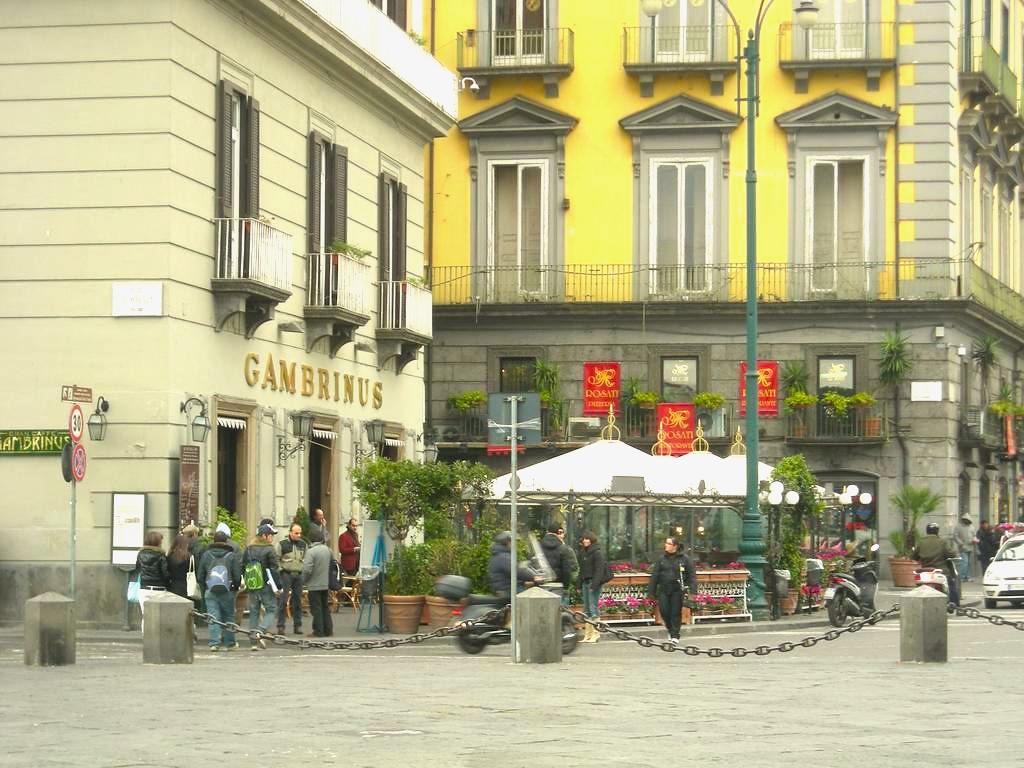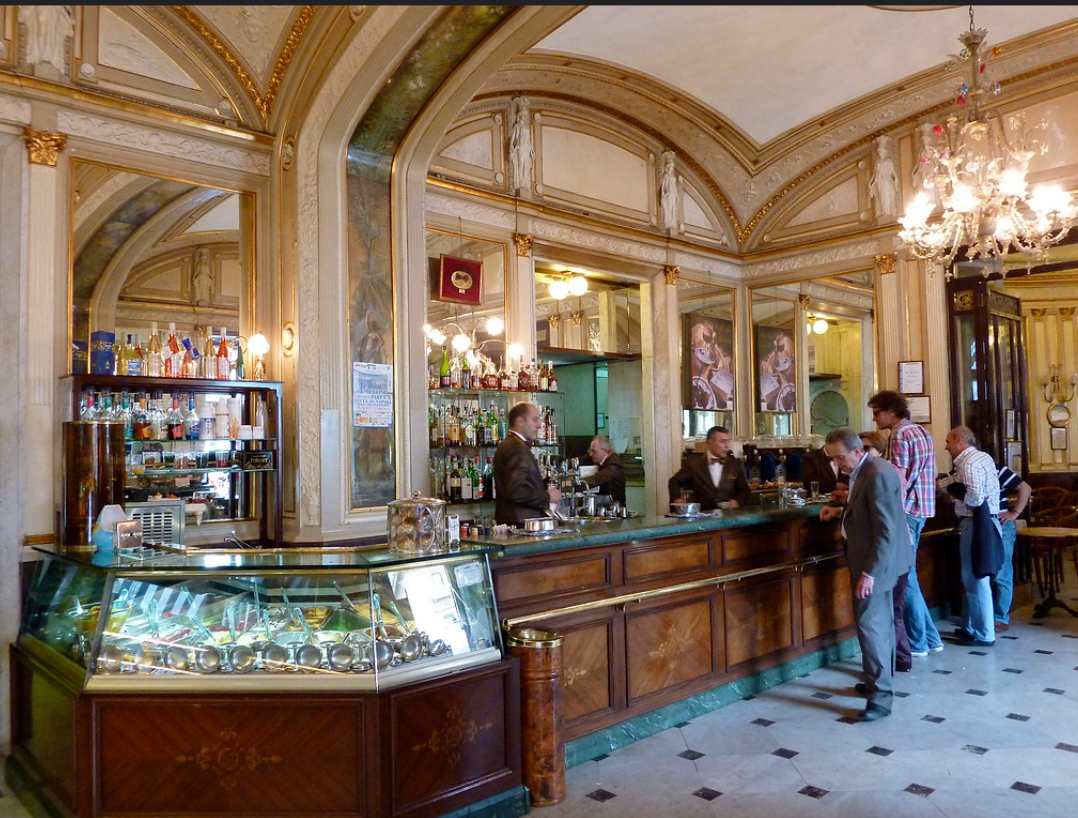It’s sweet, rich and beautiful. The curly, transparent, crunchy layers, shaped vaguely like a seashell—I prefer to think of it as a heart– envelop a fragrant, luscious ricotta mix, the whole creation baked to a golden hue. It’s a sfogliatella–in Neapolitan dialect, a’ sfugliatell’–that pastry that is virtually a symbol of Naples with its over-the-top joie de vivre.
Of course, Neapolitans took it with them wherever they immigrated and so it is equally beloved in the diaspora. In the U.S. they are also known as lobster tails and anyone who has watched the iconic show, The Sopranos, knows that Tony has a particular love for them.
There are two types: frolla, made from typical Italian shortcrust pastry, smooth and shaped like an oversized shell, and the classic riccia (curly). The riccia is what you see in pastry shops, the frolla you might want to try to make at home. If it has custard and a cherry on top, it’s a Santa Rosa riccia.
Who gave birth to this delicious treat? For the answer we could refer to another icon of Neapolitan culture, the historic Gran Caffè Gambrinus, located in the vast, historic, baroque Piazza del Plebiscito.

According to their colorful history, the delicacy was invented “between Furore and Conca dei Marini, on the Amalfi Coast, about 4 centuries ago (in the 1600s), precisely in the convent of Santa Rosa, inhabited by cloistered nuns who, by definition, had to keep busy to avoid, as much as possible, contacts with the outside”.
One day, one of the nuns, or maybe the mother superior named Clotilde, noticed some leftovers of semolina soaked in milk and got a brilliant idea of mixing it with ricotta cheese, dried fruit and lemon liqueur (which today we would call limoncello). Making a dough with wine white and lard, she stretched it till it became transparent, then enclosed the ricotta mix between two sheets and shaped it like a monk’s hood, and voilà, the classic Santarosa was born.
It sounds easy but anyone who has ever tried to make one will tell you that there are few sweet creations that require more skill than the sfogliatella. If you want to try your hand at making it, here is a how-to video.
It’s not surprising that nuns gave birth to this pastry delicacy; convents and monasteries were traditionally the main purveyors of sweets, wines and cheeses. Historians tell us that nuns were also responsible for inventing that Italian Christmas classic, struffoli, while in Sicily, nuns passed on the legacy of 9th-century North African Arab rule via the beloved cannoli.
The sfogliatella was merchandized almost immediately, as nuns sold their products directly to the public by way of an enclosed wheel situated at the entrance to the convent, where money was exchanged for the sweets; the nuns never coming into contact with the outside world.
It took a while longer for the success to go mainstream but eventually it became a staple in every pastry shop in Naples. Today there is no bar, caffè or pastry shop that does not offer it, “’a sfugliatell” has become virtually a symbol for the city itself.

As for the Gran Caffè Gambrinus, in Naples its fame is equal to that of the delicacy invented so long ago at the Santa Rosa convent.
The gambrinus is a legendary figure, reputedly a bon vivant who invented beer and known for his joviality, emblematic of the cheerful, fun-loving and whimsical Neapolitans. The coffeehouse that named itself after that figure was founded in 1860 by Vincenzo Apuzzo, whose dream was to make his establishment the most important of the newly-born Italy. The selection and quality of his sweets succeeded in making him the official supplier of the Royal House.

The Caffè is also known as having been a meeting place for Italian intellectuals and artists, like the poet, author and patriot, Gabriele D’Annunzio; the founder of the Futurist movement in art, Filippo Tommaso Marinetti, and philosopher Benedetto Croce. It also attracted renowned foreign celebrities like the noted beauty Austrian Empress Sissi, Oscar Wilde, Ernest Hemingway, Jean Paul Sartre, Guy de Maupassant, and Émile Zola.
Located near the Teatro di San Carlo, it has always been a magnet for musicians and orchestra directors before their performances in the most famous theatre of Naples.
To visit the Teatro San Carlo you must visit Naples, but to enjoy a sfogliatella you need only run to the nearest Italian pastry shop, or if you’re particularly brave, into your kitchen.












